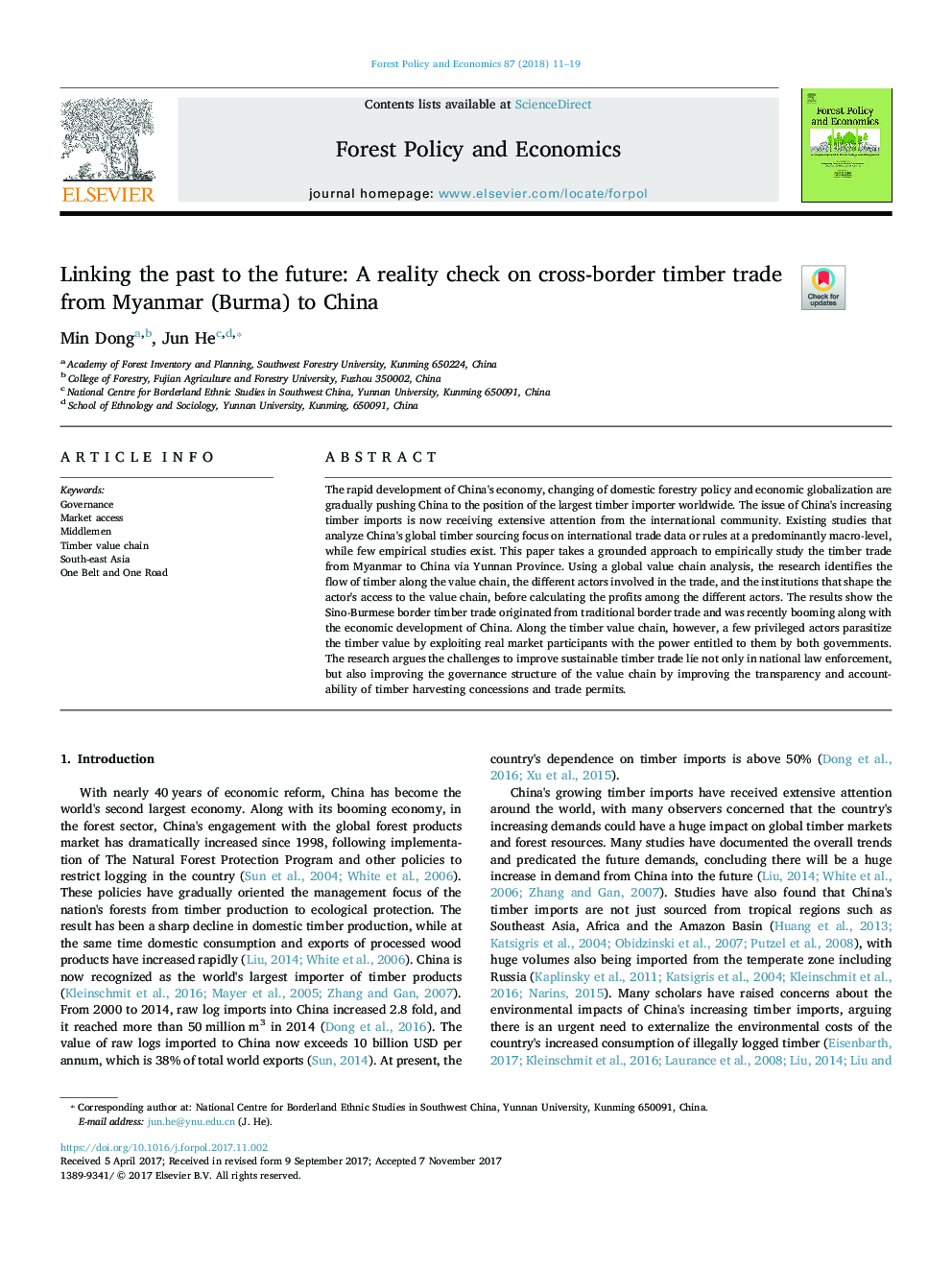| Article ID | Journal | Published Year | Pages | File Type |
|---|---|---|---|---|
| 6544812 | Forest Policy and Economics | 2018 | 9 Pages |
Abstract
The rapid development of China's economy, changing of domestic forestry policy and economic globalization are gradually pushing China to the position of the largest timber importer worldwide. The issue of China's increasing timber imports is now receiving extensive attention from the international community. Existing studies that analyze China's global timber sourcing focus on international trade data or rules at a predominantly macro-level, while few empirical studies exist. This paper takes a grounded approach to empirically study the timber trade from Myanmar to China via Yunnan Province. Using a global value chain analysis, the research identifies the flow of timber along the value chain, the different actors involved in the trade, and the institutions that shape the actor's access to the value chain, before calculating the profits among the different actors. The results show the Sino-Burmese border timber trade originated from traditional border trade and was recently booming along with the economic development of China. Along the timber value chain, however, a few privileged actors parasitize the timber value by exploiting real market participants with the power entitled to them by both governments. The research argues the challenges to improve sustainable timber trade lie not only in national law enforcement, but also improving the governance structure of the value chain by improving the transparency and accountability of timber harvesting concessions and trade permits.
Related Topics
Life Sciences
Agricultural and Biological Sciences
Forestry
Authors
Min Dong, Jun He,
